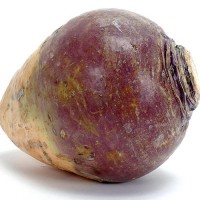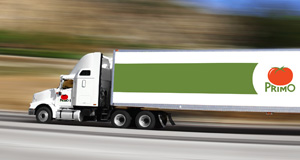
January 21- 26, 2013
Primo’s Outlook
Lettuce:
Market is very strong. We are beginning to see minor quality defects on inbound.
Leaf:
Romaine and leaf markets are much stronger. Overall quality has been very good, but we are seeing occasional issues.
Broccoli:
Market is much stronger. Shippers are very short on product and pro-rating. Overall, quality has been good.
Cauliflower:
Cauliflower market is strong. Quality has been very good.
Carrots:
Georgia has started with new crop.
Celery:
Celery market has gone up significantly. Quality has been very good.
Strawberries:
Florida berry quality has been good overall. Market has been steady to lower.
Potatoes:
Idaho market has moved up slightly for this week and next week, due to cold weather in Idaho. Trucks remain very tight.
Onions:
Onion market is on fire. Price will continue to rise for the next week or so, then should remain steady for several weeks while growers assess supplies for the rest of the season.
Citrus:
Market is steady on navels and lemons. Quality has been good. Excellent value.
Cucumbers:
Market on cucumbers is way up in price and very tight for this week and next week again. Cold weather and short product have caused these prices.
Peppers:
Market is up slightly, with okay volume and very good quality.
Tomatoes:
Tomato market is steady on rounds. Grapes, cherries, and romas are also steady.
Red grapes continue to be in very short supply and the market remains very strong. Current supply situation is expected to continue for a minimum of 2-3 weeks.
The weather in the Arizona desert has warmed in recent days, but they experienced prolonged freezing temperatures over the weekend and into Monday/Tuesday. All products are in very short supply and this is causing very high costs across the board. We can expect pro-rates and shortages at shipping point.
Feature of the Week
The rutabaga, a relatively newcomer in the world of vegetables, is thought to have evolved from a cross between a wild cabbage and a turnip. The rutabaga is a root vegetable that looks very much like a turnip, with yellow-orange flesh and ridges at its neck. Although this beta carotene-rich vegetable has been grown and marketed in our country for nearly 200 years, it remains an uncommon food in American dining. It’s actually a great tasting vegetable with a delicate sweetness and flavor that hints of the light freshness of cabbage and turnip. With its easy preparation and versatility, great nutrition, and excellent flavor, the rutabaga can easily become an endearing family favorite.
Recipe of the Week
Rutabaga Fries
Serves 4
2 rutabagas
2 teaspoons potato starch or cornstarch
3 tablespoons olive oil
Salt
Preparation:
1. Preheat the oven to 450 degrees F. Lightly grease a large baking sheet.
2. Slice off the top and bottom of the rutabagas so that they will rest flat on the cutting board. Then cut off the skin with a sharp paring knife by cutting against the curve of the flesh. (A vegetable peeler unfortunately doesn’t cut deeply enough to scrape off all the skin). Cut into 1/4-inch matchsticks.
3. Toss the potato starch with the rutabagas, and then add olive oil and 1 teaspoon salt.
4. Spread the rutabagas onto the prepared baking sheet. Bake for 25 to 30 minutes, flipping twice during that time. When done, they will be crispy on the outside and tender on the inside. Remove with a metal spatula and toss with additional salt to taste.
Fun Facts of the Week
Ithaca, New York holds an annual event in which rutabagas are substituted for the normal equipment in what sport?
Curling. The International Rutabaga Curling Championship is held on the last market day of the year at the Ithaca Farmer’s Market and can draw over a hundred contestants. The court is the central hall of the market. Cumberland, Wisconsin also has a Rutabaga Festival.


